TEN-T and EuroVelo 1: synergies are needed to avoid barrier effects!
Major roads and railways that belong to the Trans-European Transport network (TEN-T) often are a barrier for walking and cycling, responsible for lack of continuity, bottlenecks or unsafe sections on pedestrian and cycle routes. On the other hand, there are also examples of synergies between TEN-T and active mobility, for example including a track for pedestrians and cyclists on a rail bridge.
Current TEN-T regulation (EU) No 1315/2013 includes a recital encouraging to exploit synergies, “for instance with tourism aspects by including on civil engineering structures such as bridges or tunnels bicycle infrastructure for long-distance cycling paths like the EuroVelo routes.” In the ongoing revision process, the European Parliament proposed to take synergies with EuroVelo on board in article 5 of the TEN-T guidelines, but the Council of the EU General Approach did not include a similar provision. As of June 2023, the final shape of the revised regulation is still a subject of negotiations between European institutions.
ECF has identified 7,861 locations around Europe where the EuroVelo routes run along or across TEN-T roads, railways or inland waterways in a detailed analysis in 2020. The total length of sections where EuroVelo overlaps with TEN-T adds up to nearly 10,000 km, not including the recent addition of EuroVelo 14, and the EuroVelo 3 extension in Spain. The numbers show the enormous potential of integrating cycling and EuroVelo into the TEN-T!
ECF continues to advocate for integration of EuroVelo and cycling into the TEN-T guidelines. However, a European regulation can only establish general policies. It is up to national stakeholders to engage on the national level, monitor planned TEN-T investments, and present concrete proposals for specific TEN-T projects. Below, we present a few examples, analysed during the AtlanticOnBike extension project, when working on an Action Plan for EuroVelo 1 – Atlantic Coast Route.
Ireland
In Ireland most of the interactions concern road network. For example, on a 30-km section from the UK border to Letterkenny, in County Donegal, EuroVelo 1 has six crossings with TEN-T roads (N13 and N14). All of them have been evaluated during the route survey as dangerous. Around Manorcunningham, the route is on the N14 for approximately 50 m. Recent (July 2021) resurfacing of the carriageway did not lead to the creation of safe cycle facilities, neither for crossing, nor for travelling along the road.
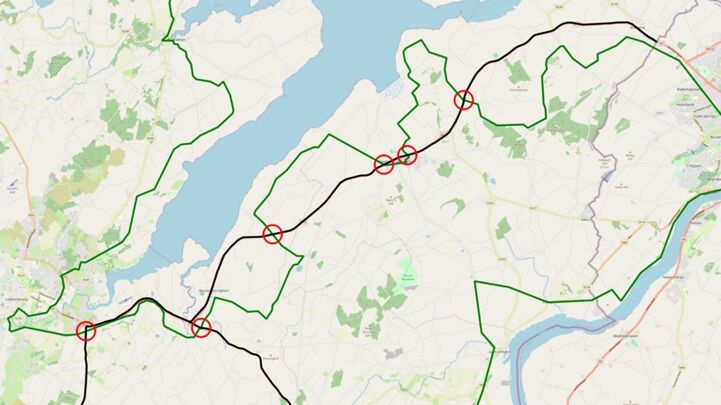
In the south, across the counties of Cork and Waterford, the N25 road is another example of a TEN-T barrier, with an abrupt ending of a cycleway at an interchange west of Midleton. Further east cyclists need to ride on the N25 itself, to get to and across Youghal bridge, the only way to cross the River Blackwater in the area. To avoid this section, one would need to make a 45 km detour!
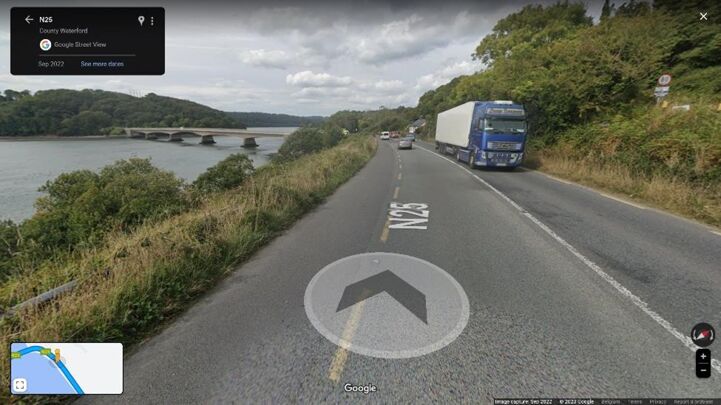
France
Since July 2021, EuroVelo 1 and EuroVelo 6 cross the area of the TEN-T port Nantes Saint-Nazaire (not open to the general public). This created a traffic-free connection between Nantes and the municipalities of Rezé and Bouguenais, allowing both long-distance and local cyclists to get to and from the city while avoiding busy roads in the industrial zone.
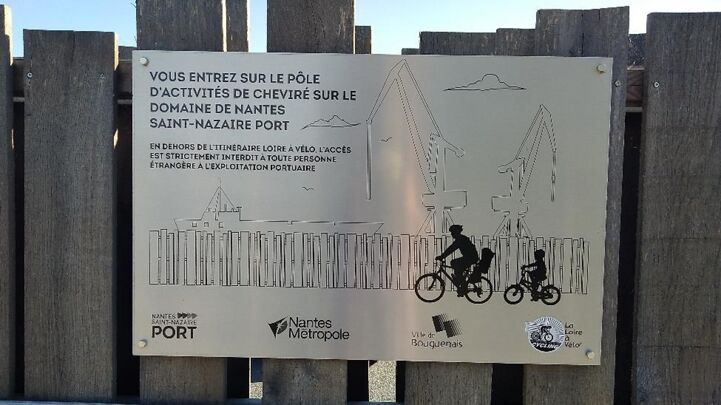
The Charles-Vaillant bridge in Bayonne, completed in 2013, carries a TEN-T railroad line (Atlantic corridor) and a cycle and pedestrian path (part of EuroVelo 1). The bridge itself could be considered as best practice of integrating cycling into rail projects, however on the southern side it is only accessible by a lift, which greatly reduces reliability, capacity and usability of the cycling infrastructure.
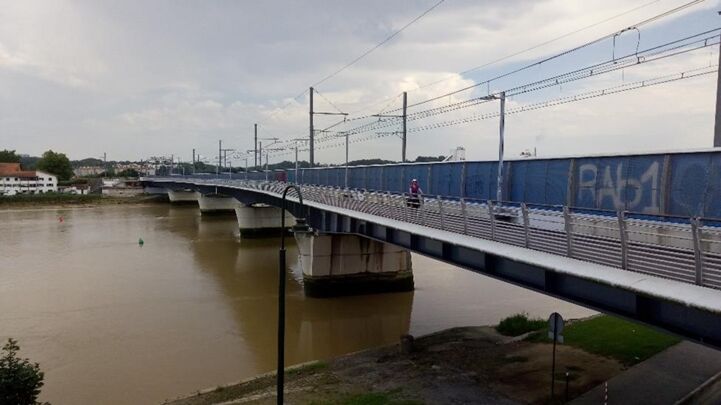
Spain
Spain is another country with multiple interactions between EuroVelo 1 and TEN-T. In many remote areas multiple modes of transport follow the same historical corridors, such as Ruta Vía de la Plata in the west of the country. Of particular interest is the Plasencia – Salamanca railway. On the current TEN-T maps it is displayed as a "completed” rail line. But the line has not been in use since 1996, and by now it has been partially dismantled. In fact, parts of it have already been reconstructed to a greenway and are a fully-fledged part of the EuroVelo 1 itinerary. The European Commission removed this rail line from TEN-T in their revision proposal in 2021, but both the Council of the EU and the European Parliament reinstated the connection.
At the moment, however, reopening this railway is not a priority for the Spanish Government. It may open again but only after 2040. If this happens, the new railway will probably be on a new itinerary because the previous trace is very old, and not adapted to modern construction, so it should not affect the continuity of EuroVelo 1.
In February 2023, a new section of the old railway line was opened and completed the greenway from Béjar to Plasencia. The Spanish Agriculture Ministry is working on the last section to incorporate it into the greenway as well. The whole section from Salamanca to Plasencia will be implemented by 2024.
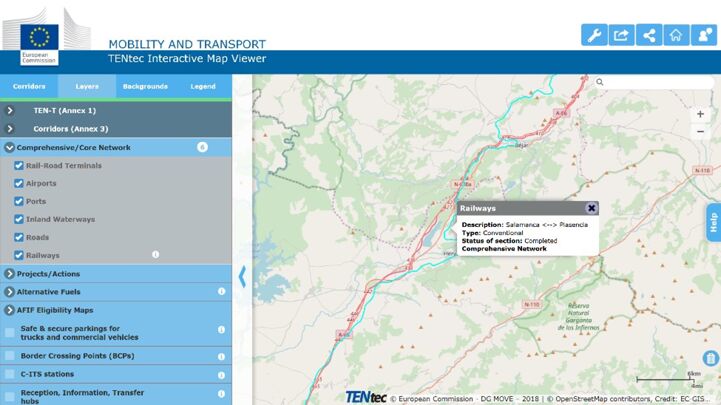
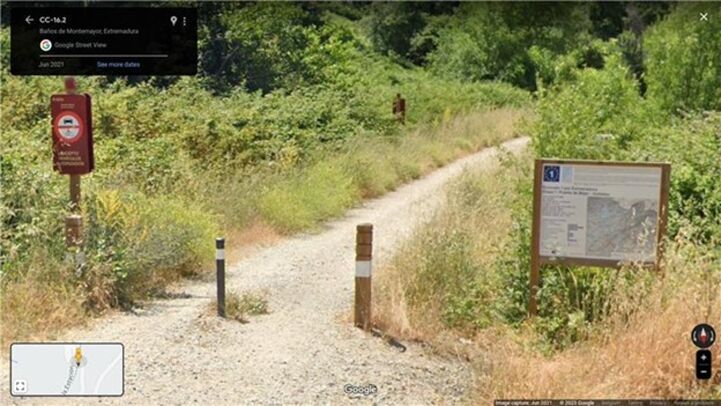
Portugal
An example of a missed opportunity in Portugal is Ponte Edgar Cardoso, a TEN-T road bridge across the Mondego River in Figueira da Foz. Because of the high speed and volume of motorised traffic, EuroVelo 1 makes a 20 km detour inland to avoid this dangerous bridge. Ongoing renovation of the bridge does not include a cycle track. There are plans for a new active mobility bridge, but it is to be located 5 km away from the centre, while the TEN-T bridge leads straight to the Figueira da Foz train station (also part of TEN-T).

Article by Aleksander Buczyński and Agathe Daudibon, with kind contributions from Florence Grégoire and the AtlanticOnBike project partners.